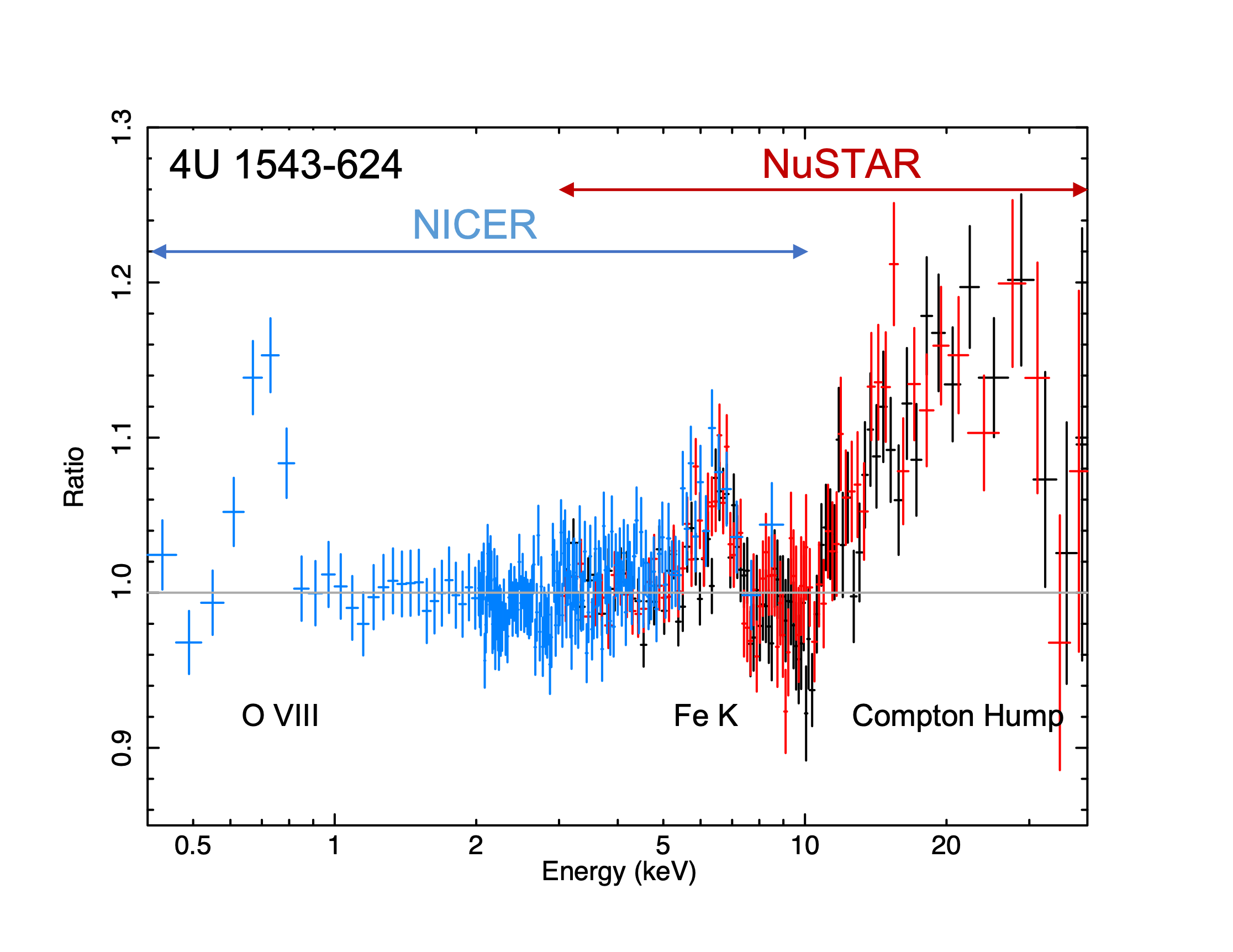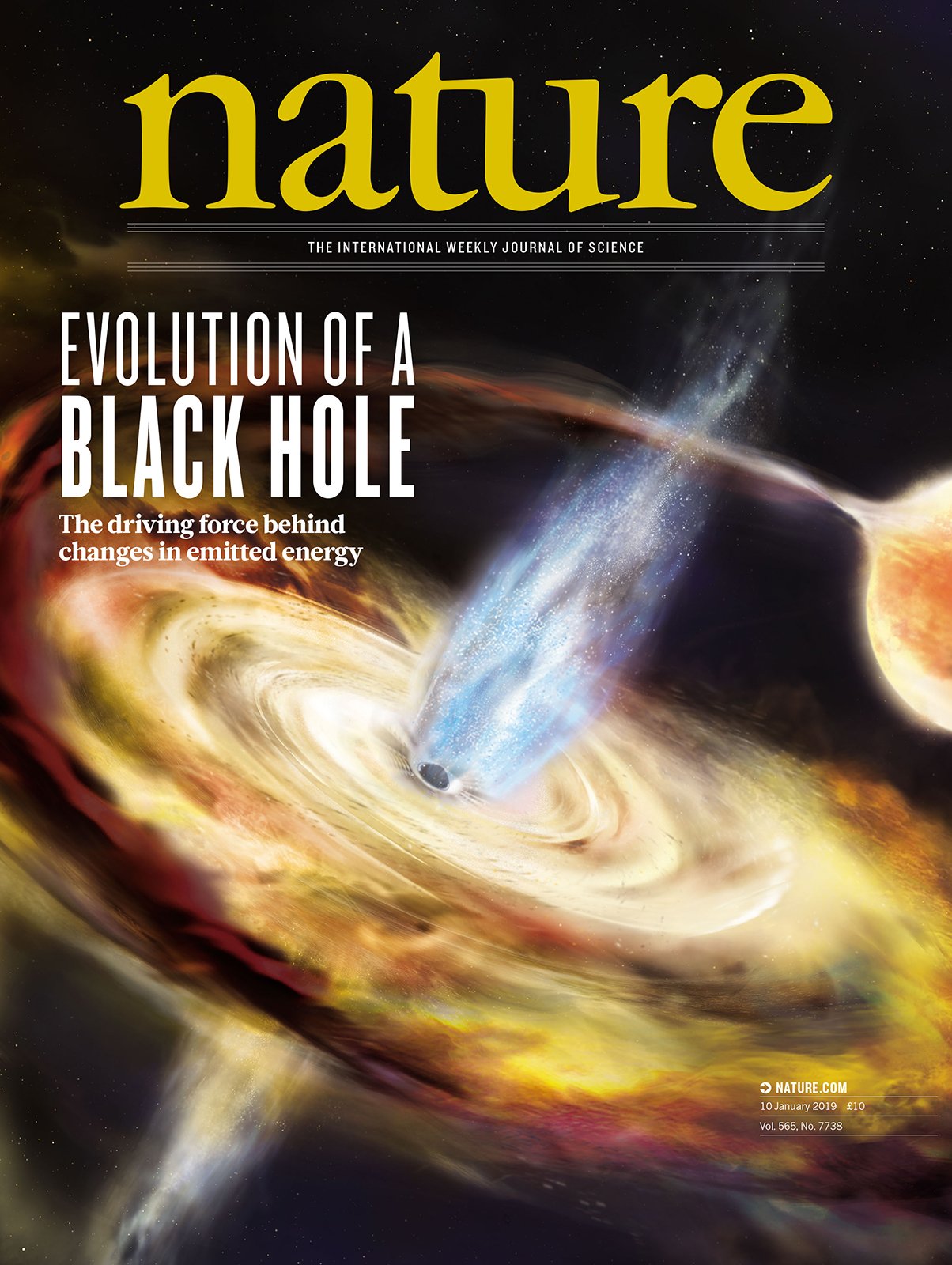NICER / ISS Science Nugget
for January 26, 2023
A Pair of Pierce Prizes
Each year, the American Astronomical Society awards a young researcher (less than 36 years of age) the Newton Lacy Pierce Prize, named after the American astronomer (b. 1905 - d. 1950) who taught and conducted research at Northwestern and Princeton Universities. The Pierce Prize is awarded "for outstanding achievement in observational astronomical research based on measurements of radiation from an astronomical object."
This week, AAS announced that NICER Science Team member Dr. Renee Ludlam (Wayne State Univ.) is the 2023 Pierce Prize winner "for novel explorations of the relativistic universe that have revealed fundamental properties of neutron stars." Notable among Dr. Ludlam's achievements are investigations of the glowing disks of hot gas around neutron stars that draw matter from their companion stars in binary systems. Observations in low-energy (with NICER) and high-energy (with NASA's NuSTAR telescope) X-ray light demonstrate that these accretion disks reprocess and "reflect" X-rays emitted from a super-heated and still-mysterious plasma (the so-called "corona") above the disk. Dr. Ludlam's spectroscopic measurements of fluorescent emission from iron, oxygen, and other atoms in the disk that are stimulated during this reprocessing have led to meaningful constraints on the sizes of neutron stars. Dr. Ludlam will deliver a plenary Prize Lecture at the next AAS Winter meeting, in January 2024.
Dr. Ludlam's award follows on the heels of another NICER Science Team member's Pierce Prize: last year, Dr. Erin Kara (MIT) was recognized "for her innovative and sustained contributions to high-energy astrophysics." Dr. Kara's observational work using NICER and other telescopes involves accreting black holes, using both reflection spectroscopy and high-precision timing to probe the disk-corona geometry and its evolution during accretion episodes. A key NICER result by Dr. Kara, demonstrating the shrinking of an X-ray corona in a black-hole binary within our Galaxy, was published as the cover story in January 2019 by the prestigious journal Nature. Dr. Kara delivered a well-received plenary Prize Lecture at the 2023 AAS Winter meeting two weeks ago.
NICER mission leadership congratulates these outstanding scientists and is grateful for their continuing contributions!


Figure:
Left: A spectrum of the ultracompact (90-min orbital period) neutron-star binary system 4U 1543-624, obtained jointly by NICER (blue points) and NuSTAR (red points), with X-ray photon energy on the horizontal axis, and where a broadband continuum trend has been modeled and removed. The "hump" at approximately 0.7 keV is due primarily to fluorescing oxygen atoms, while that at 6.4 keV is due to iron. Importantly, this 2021 study led by Dr. Renee Ludlam showed that the shifting and broadening of these two lines as a result of Doppler and other relativistic phenomena are the same.
Right: Cover of the January 2019 issue of Nature, with an artist's illustration highlighting the results of a NICER study led by Dr. Erin Kara
<< Previous
Main Index
Next >>